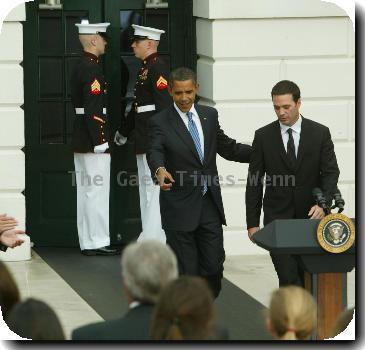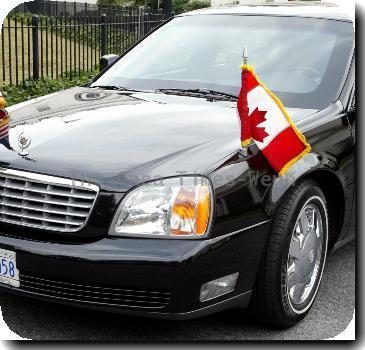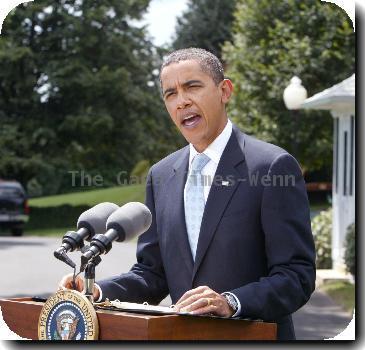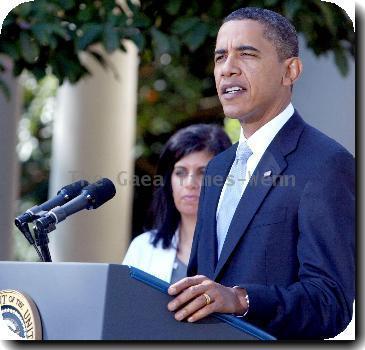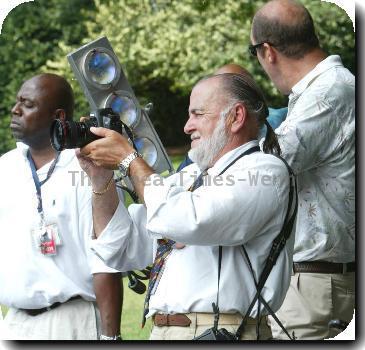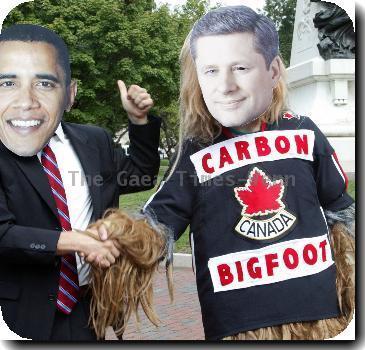Joblessness at 10 percent for 2nd time since WWII; millions of unemployed feel no recovery
By Jeannine Aversa, APFriday, November 6, 2009
What recovery? Unemployment shoots past 10 percent
WASHINGTON — Just when it was beginning to look a little better, the economy relapsed Friday with a return to double-digit unemployment for only the second time since World War II and warnings that next year will be even worse than previously thought.
The jobless rate rocketed to 10.2 percent in October, the highest since early 1983, dealing a psychological blow to Americans as they prepare holiday shopping lists. It was another worse-than-expected report casting a shadow over the struggling recovery.
President Barack Obama called it “a sobering number that underscores the economic challenges that lie ahead.” He signed a measure to extend unemployment benefits and to expand a tax credit for homebuyers.
Economists had not expected the 10 percent mark to come so quickly and immediately darkened their forecasts. Mark Zandi, chief economist at Moody’s Economy.com, and Joshua Shapiro, chief U.S. economist at MFR Inc., predicted the rate will peak at 11 percent by mid-2010. They earlier had projected 10.5 percent.
Unemployment at 11 percent would be a post-World War II record. Only once since then has joblessness hit double digits in the United States — from September 1982 to July 1983, topping out at 10.8 percent.
“It’s not a good report,” said Dan Greenhaus, chief economic strategist for New York-based investment firm Miller Tabak & Co. “What we’re seeing is a validation of the idea that a jobless recovery is perfectly on track.”
The Labor Department, using a survey of company payrolls, said the economy shed 190,000 jobs in October. A separate survey of households found 558,000 more people were unemployed last month than in September. Some 15.7 million Americans are out of work.
The survey of companies doesn’t count the self-employed and undercounts employees of small businesses. So the economic picture could be even more dire.
One struggling small business, homebuilder Miller and Smith Inc. of McLean, Va., has trimmed its work force to about 100 from 350 at the height of the housing market in 2005. The company has been hurt by a slowdown in building and surging health care costs.
Troubles for small businesses could have a disproportionate effect on the economy, because they account for about 60 percent of the nation’s jobs. They tend to rely on credit cards and home equity lines — both of which banks have tightened — for cash flow.
And the unemployment rate doesn’t include people without jobs who have stopped looking, or those who have settled for part-time jobs. Counting those people, the unemployment rate would be 17.5 percent, the highest since at least 1994.
Economists had expected unemployment to rise to no more than 9.9 percent, up just a tick from September’s 9.8 percent, and the surprising jump added to fears that the recovery could fizzle if Americans don’t spend.
Already, consumer confidence for October came in well below what analysts were expecting. Shoppers’ sentiments about the state of the economy are the gloomiest in nearly three decades.
Stores, always with an eye on holiday sales, are especially worried this year.
“This is a situation where the recovery balloon is getting off the ground but might not have enough power to keep rising,” said Brian Bethune, economist at IHS Global Insight.
Sitting at a St. Louis unemployment center, Paul Branyon, who was laid off in July from a Williams-Sonoma factory in Tennessee and now lives with relatives, shook his head and laughed at the notion that the recession is over.
“It’s getting actually harder right now,” the 26-year-old said. “It seems like everywhere you go, people are losing jobs. People are cutting back. So it’s going to get harder before it gets easier.”
The economy actually grew from July to September for the first time in a year, but that’s no consolation for people like Jose Betancourt, 57, who goes to a Miami-area career center twice a week to take computer education classes.
Betancourt has been out of work since July, when he was laid off from his supermarket maintenance job. He lives on about $600 a month in unemployment benefits, barely enough for the rent for his efficiency apartment, food and utilities.
He has trouble believing the recession is over. In his neighborhood, he sees other jobless people and empty stores.
“It’s as if they just gave the economy a nice coat of varnish to make everyone feel better,” he said. “I’m in a state of anxiety, and I see it all around Miami.”
The worst recession since the 1930s may be over, but the recovery isn’t expected to be strong enough to stem job losses and get businesses hiring again. And the unemployed are staying out of work longer. The count of people jobless for six months or longer stands at a record 5.6 million.
As for employers, few are confident enough in the recovery to hire. Art McKeen, plant manager of the Baldor Electric Co. factory in suburban St. Louis, says the plant has no plans add workers any time soon.
Baldor cut back production last year and put workers on part-time hours rather than lay them off. Orders have picked up again, but not enough to justify hiring. “We don’t have the need for them right now,” McKeen said.
Prospects that the government might pass a second stimulus bill appear dim. Congress is already grappling with sweeping health care legislation, raising concerns about further swelling the federal deficit.
“More debt, more spending … clearly has not worked — particularly in a time of double-digit unemployment,” said Senate Republican leader Mitch McConnell of Kentucky. Democrats said the economy would have been in worse shape without the first stimulus.
October was the 22nd straight month the U.S. economy has lost jobs, the longest on record dating back 70 years. Losses at factories, construction companies, retailers and financial services companies far outweighed gains in education and health care, professional and business services and elsewhere. Government payrolls were flat.
One faint sign of hope: Temporary employment grew by 33,700 jobs, its third straight month of gains after steep losses earlier this year. Employers are likely to add temporary workers before hiring permanent ones.
Chris Rupkey, an economist at the Bank of Tokyo-Mitsubishi, called the big jump in the jobless rate “a kick in the stomach” and predicted a slog ahead. It could take at least four years for the jobless rate to drop to more normal levels of 5 or 6 percent.
“The last two recoveries from recession in the ’90s and 2001 were jobless, and this one is clearly headed down the same road,” he said.
Associated Press Writers Jim Kuhnhenn and Anne Flaherty in Washington, Emily Fredrix in Milwaukee, Christopher Leonard in St. Louis, Adrian Sainz in Miami, Andrew Vanacore in New York and Tom Murphy in Indianapolis contributed to this report.
Tags: Barack Obama, Careers, Florida, Labor Economy, Losing A Job, Miami, New York, North America, Personal Finance, Personal Loans, Real Estate, Recessions And Depressions, United States, Us-economy, Washington
